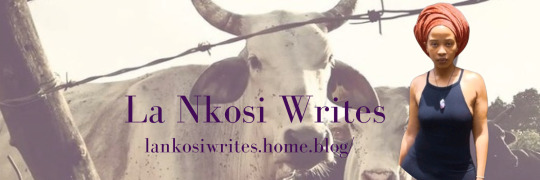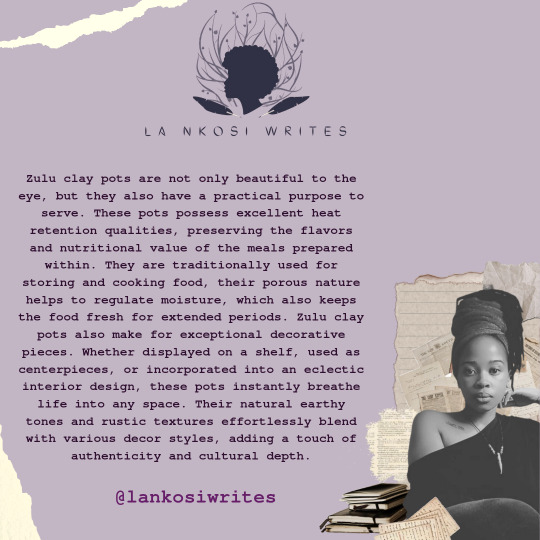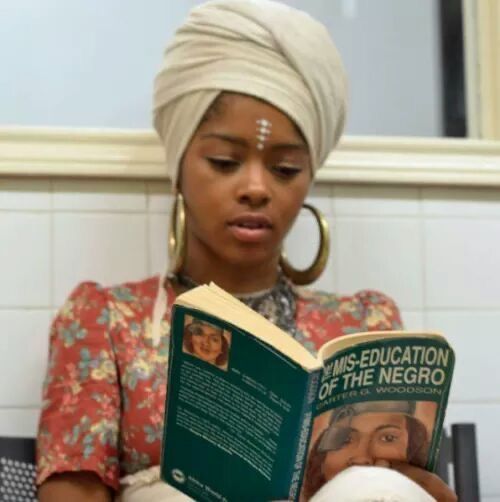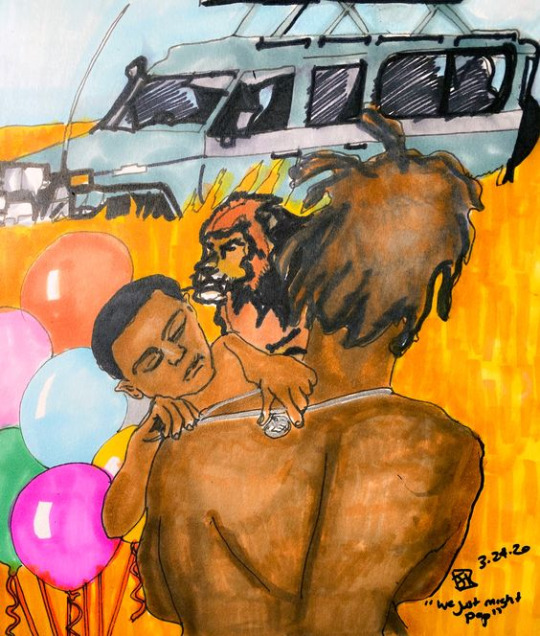#BlackCommunities
Explore tagged Tumblr posts
Text
Could He Be The Worst ANCYL President?
The current president of the ANCYL, Collen Malatji could land himself the worst president the league has ever had title. If he continues to float on the wave of arrogance that has him singing outdated tunes, the youth have no interest in giving a listen.La Nkosi His lack of relatability is detrimental to his ability to effectively lead and represent the concerns of the youth. This is due to his…

View On WordPress
#2024#AfricanCrisis#Africanleaders#AfricanPolitics#ANCYL#blackcommunities#blackleaders#bulliesinthespace#captured#capturedactivists#capturedleaders#collenmalatji#controlledactivism#corruption#corruptioningovernance#corruptleaders#corruptministers#corruptseniors#lankosi24#lankosiopinion#lankosispeaks#lankosiwrites#youngleaders#youngpeople#youth
3 notes
·
View notes
Video
youtube
Music, Community and Beyond with Melafrique | Exclusive Interview With ...
#youtube#leshanmasikonte#melafrique#melafriqueband#african#melafriquebandedmonton#music#newcanadianmusic#blackhistorymonth#riwoegor#immigrantafrianstudentincanada#blackhistorymonthmusic#internationalstudent#blackmusic#blacksinger#black#africanmusicians#blackmusicians#blackcommunities
2 notes
·
View notes
Video
youtube
Music, Community and Beyond with Melafrique | Exclusive Interview With ...
#youtube#leshanmasikonte#melafrique#melafriqueband#african#melafriquebandedmonton#music#newcanadianmusic#blackhistorymonth#riwoegor#africanmusic#melafriquebandinterview#inspiremusic#fuseinwhoamI#tapestrywithmiriam#musicians#blackcommunities#blackmusicians#africanmusicians#black#blacksinger#blackmusic#internationalstudent
2 notes
·
View notes
Text

#malcom x#el hajj malik el shabazz#blackisbeautiful#blackmen#blackactivism#blacknationalism#black identity#blackcommunity#afrocentrism#panafricanism#rootingforeverybodyblack#blackhistory#blackhistorymonth#the black experience#blackconsciousness#theblacknarrative#blacktivism#belovedcommunity#blackexcellence#blacklivesmatter#civilrights#allblackeverything#fortheculture#blackculture#blackpositivity#blackpeople#blackpride#blackpower#blacktumblr
250 notes
·
View notes
Text
Happy BLACK HISTORY MONTH FAMILY✊🏾🙅🏾♀️🙅🏿🤴🏾👸🏾 You Already Know. Be Not Afraid😘✊🏾
.... and MAKE SURE you keep ya mouths SHUT! NO NEED TO EXPLAINNNNNNN anything online! 🔥🔥🔥🔥
#theme song#happy black history month#black history#blacklivesmatter#black lives matter#black people#b1#black first#black empowerment#black culture#black liberation#black women#black men#black children#knuck if u buck#BlackMan#BlackMen#BlackWoman#BlackWomen#blackexcellence#BlackMenAreLoved#BlackWomenAreLoved#blackpower#blackwallstreet#BlackWealth#BlackCommunity#blackpride#blackqueen#blackqueens#blackking
39 notes
·
View notes
Text

High priestess Ethiopian twins Peaches and pearls
#hybridbeauty#art#beautiful#blackgirlmagic#black#melanin#nft crypto#nftart#digital art#ethiopian woman#ethiopia#artist#digital artist#afrocentric#high priestess#art collab#art community#blackcommunity#barbados#sisters#culture#family#oneness
24 notes
·
View notes
Text
#ArnoldSchwarzenegger#Inspiration#BlackCommunity#AmericanDream#Bodybuilding#HollywoodIcon#Motivation#SuccessStory#Leadership#FitnessMotivation#RoleModel#Perseverance#Strength#ArnoldInspires#DreamBig
2 notes
·
View notes
Photo


It's breathable, comfortable, and designed for water activities. Perfect for those who love to swim but don't want to get their hair wet. No more hassle with glue, caps or uncomfortable wigs. — —--
3 notes
·
View notes
Text
The Mesmerizing Beauty of Zulu Clay Pots

View On WordPress
#2023#africaisourhome#Africanheritage#AfricanHistory#Africanpottery#africanspirituality#Afrika#ancestralknowledge#ancestrallove#ancestralstrength#ancestralwisdom#ancientAfrica#Awakeningminds#blackcommunities#BlackGirlMagic#BlackHistory#blackwomanwriter#KnowYourHistory#lankosiwrites#SouthAfrica lankosi#Zulu#ZuluClayPots#ZuluPots
4 notes
·
View notes
Text

City of Baltimore (AMNG) Scan this code below on the flyer with your #smartdevice to go directly to the submissions form for our weekly #MonumentalMondays newsletter and partner programs. Deadline for next issue is 07/21/2024.
Read details at amnglobal.com
We urge you to submit your entries before Sun. July 21st, 2024 at midnight (Est) to ensure that they are included in the next newsletter. Here are some key points to keep in mind when submitting your entries:
Entries should be brief and to the point.
Include any relevant details, such as dates, times, locations, and contact information.
Contributions should align with our community values and mission.
This is your chance to share your business’s happenings or initiatives that you are passionate about. Whether you’re promoting an upcoming #charityevent, showcasing a new #businessprogram or activity, or announcing a significant milestone, we want to hear from you!
Starting a new business is a monumental achievement, and we want to support you by giving you a platform to share your journey and successes. Don’t miss out on this chance to connect with a broader audience and gain more visibility for your endeavors.
So, take action now and submit your entries before the deadline closes. We look forward to receiving your submissions and sharing them with our readers.
#befinanciallyfree
Thank you for your contributions and continued support.
#maryland#connections#blackcommunity#specialfocus#media#arts#amnglobal#monumentalmondays#music#events#baltimore#dmv#indie#government#solutions#freedom#movements#users#businessowners#businessnews#weeklynews#westminster#germantownmaryland#lancasterpa#frederickmaryland#hagerstownmaryland#fallstonmaryland#rockhallmaryland#bwi#annapolismaryland
1 note
·
View note
Text
youtube
#black#film#the kitchen#4deuce films#4deuce#danielkaluuya#filmreviews#moviereviews#blackcommunity#blackculture#Youtube
0 notes
Text
youtube
Reclaiming Black Culture From The Hood
This brief podcast is about how so-called "hood culture" came to heavily influence and be seen as synonymous with black culture over the past few decades.
#blackwomen#blackwoman#blackmen#blackpeople#blackcommunity#blacktwitter#blackgirlsrock#bglw#hood#hoodculture#ghetto#blackculture#rap#hiphop#black lives matter#Youtube
1 note
·
View note
Text

#blackisbeautiful#blackwomen#blackactivism#blacknationalism#black identity#blackcommunity#afrocentrism#panafricanism#rootingforeverybodyblack#blackhistory#blackhistorymonth#the black experience#blackconsciousness#theblacknarrative#blacktivism#belovedcommunity#blackexcellence#blacklivesmatter#civilrights#allblackeverything#fortheculture#blackculture#blackpositivity#blackpeople#blackpride#blackwomenbelike#blackpower#blackgirlmagic#blackgirlaesthetic#blacktumblr
168 notes
·
View notes
Link
The #MeToo movement continues to evolve, and Tarana Burke, the movement's founder, offers insightful commentary on the recent allegations against music mogul Sean "Diddy" Combs. In an interview with The Hollywood Reporter, Burke discusses the significance of these accusations, the changing tide of public opinion, and the importance of a movement that extends beyond high-profile figures. A History of Whispers and a New Era of Accountability For years, rumors swirled around Diddy's alleged misconduct. As Burke states, "people have heard grumblings and whispers" about him. However, the question remained: would there ever be any true consequences? Diddy Allegations The landscape has shifted dramatically in recent months. Following a sexual assault lawsuit filed by singer Cassie, a flurry of additional accusations emerged, including rape, sexual assault, and trafficking. These claims, coupled with a raid on Diddy's homes by federal agents, forced him to step down from his role as CEO of Revolt TV and resulted in the loss of several brand deals. Why Now? The Evolving Zeitgeist Burke highlights a crucial difference between the Diddy situation and past cases like R. Kelly and Russell Simmons. "The zeitgeist has changed," she asserts. "People are ready to believe the survivors who are coming forward." This shift in public opinion is attributed, in part, to the groundwork laid by the #MeToo movement. The tireless efforts of survivors and advocates have challenged the status quo and fostered a growing sense of accountability. Burke emphasizes the historical struggle for Black communities, particularly women of color, to be heard and believed when speaking out against sexual assault. "We haven't had the luxury of being able to come forward," she says. The Diddy allegations, therefore, represent a turning point, a testament to the collective power of the #MeToo movement. Beyond Diddy: A Movement for All While the allegations against Diddy are significant, Burke emphasizes a broader message. She acknowledges the symbolic importance of holding a powerful figure accountable, yet cautions against focusing solely on this individual case. "The movement has to be bigger than Diddy," Burke declares. The harm caused by sexual violence extends far beyond one person. It's essential, she argues, to recognize the ongoing struggles within communities across the country. By shining a light on high-profile cases, the movement can serve as a blueprint for addressing similar issues at the local level. Burke emphasizes the collective power of individuals to demand change. The #MeToo movement is not simply a hashtag; it thrives on the actions of everyday people who speak out against injustice. A Conversation on Homophobia and Accountability The interview delves into the complexities surrounding the allegations against Diddy, including the issue of homophobia within the Black community. Burke acknowledges the discomfort some may feel discussing sexual assault against men, but underscores the importance of addressing all forms of sexual violence. Key Takeaways The Diddy allegations represent a potential turning point for the #MeToo movement in the music industry. A shift in public opinion has made victims more likely to be believed. The movement must address the specific challenges faced by Black communities. The power of the #MeToo movement lies in collective action and the demand for accountability.
#MeToomovement#Accountability#Blackcommunity#DiddyAllegations#homophobia#Musicindustry#R.Kelly#sexualassault#TaranaBurke
0 notes
Text

“WE JUST MIGHT POP” 9” x 12””
#blackfathers#blacklove#blackexcellence#blackfamily#blackmen#blacklivesmatter#blackdads#love#blackfathersmatter#fatherhood#melanin#blackmothers#blackgirlmagic#blackpower#blackman#blackfatherhood#blackwomen#beautyinthedark#blackking#girldad#blackcommunity#blackculture#dadlife#dad#blackfamilies#black#blackunity#family#supportblackownedbusinesses#africanking
0 notes
Photo


It's breathable, comfortable, and designed for water activities. Perfect for those who love to swim but don't want to get their hair wet. No more hassle with glue, caps or uncomfortable wigs. — —--
0 notes